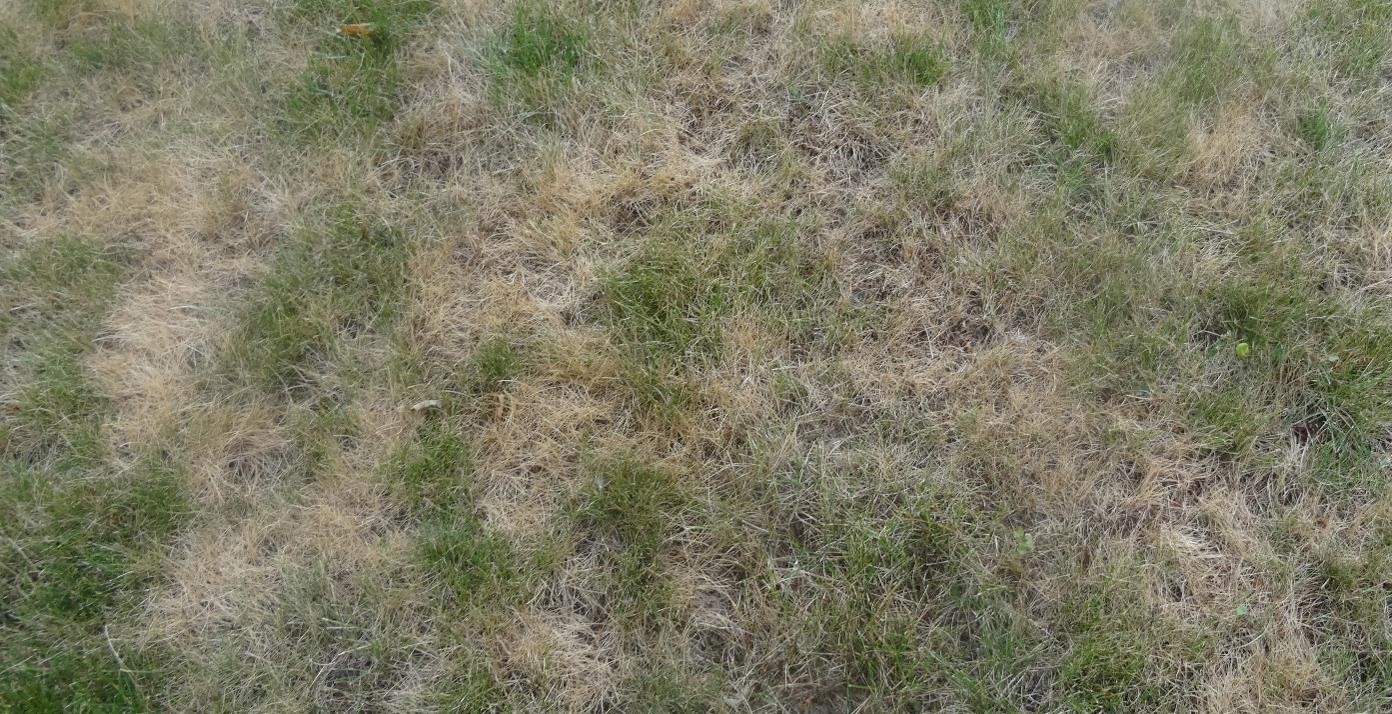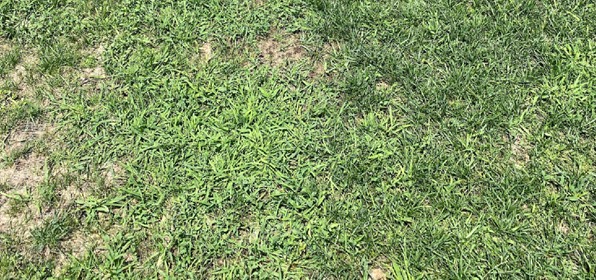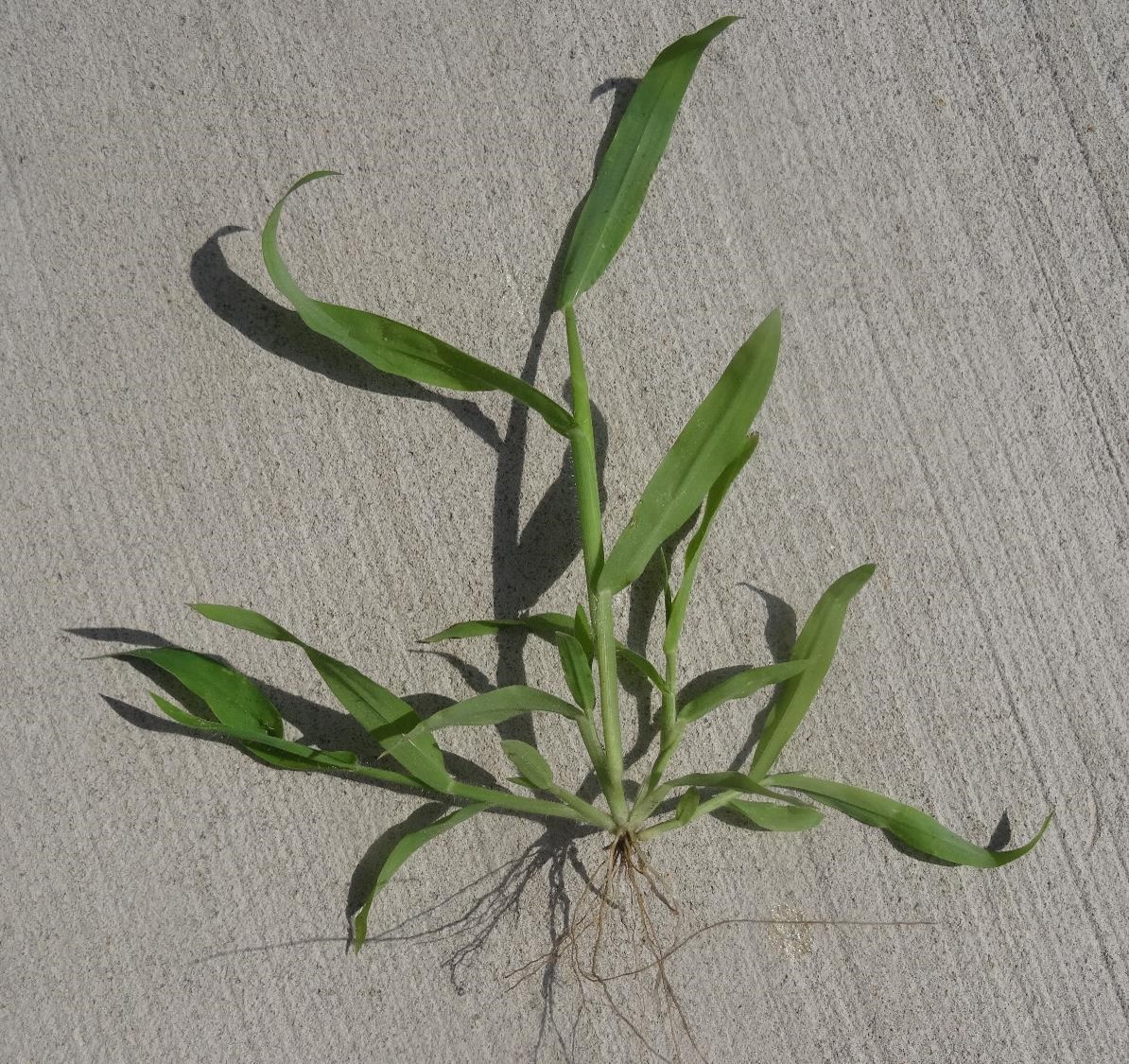Welcome to the latest issue of the Home Lawn Care Newsletter from UMN Turfgrass Science! We will provide up-to-date information to address all your lawn care tasks at the times when you need to know.

July 17, 2023: Issue 13
Should I water my lawn?
This is certainly shaping up to be a dryer than normal summer, with much of the state experiencing moderate or severe drought. We wrote about these conditions in the June issue of the Lawn Care Newsletter with the things you can do to limit stress during drought such as not fertilizing or limiting mowing to only when the lawn needs it.
Generally, our lawns are capable of surviving up to 64 days of sudden drought, and even through multiple cycles of drought followed by sufficient rainfall. But can they hold up to prolonged drought after already being stressed? If your lawn is really “crunchy”, then it might be a good idea to consider watering with your irrigation system or dragging out your hose and watering. Areas that are full sun, south-facing, or have sandier soils will be the most stressed and will be areas that need some water first.
One strategy for keeping your lawn alive this summer is to time your watering with a lighter (less than 0.75 inches) rainfall event. When soil is really dry like most of our soils are currently, a rain shower of even half an inch will only wet the soil an inch or so deep. By supplementing the shower with irrigation, you can ensure more water will get deeper into the rootzone and be more plant available as well as protected from evaporation. You can use a small piece of tupperware or dig into the soil as you are watering to track how much water is being applied and how deep it is getting into the soil.
Regardless, if you are going to water, make sure you are following local watering restrictions. The best time to water is at or near dawn, and you should avoid watering during the heat of the day. If you have an irrigation system, ensure that it is working properly through an irrigation audit.
Seeding this summer?

Like many good lawn maintenance practices, seeding is best done in the fall. There’s a long period of cool weather and less competition from weeds, which helps grass seedlings establish before going into winter.
If you can’t wait until mid-August to seed, take steps to keep seeds and seedlings from drying out. Use mulch blankets and water several times a day for short periods of time. Remember to prepare your site by removing weeds. If you use a broadleaf weed control herbicide for preparation, understand the waiting period before planting grass seed. Consider using a starter fertilizer with mesotrione if you are planting Kentucky bluegrass, tall fescue or perennial ryegrass. Mesotrione cannot be used with fine fescue seeds.
- Seeding your lawn in June or July? You might want to wait by Gary Deters, UMN
- Seeding and sodding home lawns from UMN Extension
- Tips for seeding your lawn during summer from MSU Extension
- Establishing turfgrass areas from seed from Purdue and University of Illinois Extension
Late summer crabgrass control

Crabgrass and other summer annual grassy weeds are hitting their prime in Minnesota. Lawns are under stress and are not the thick, long turf that keeps crabgrass at bay. Post-emergent chemicals are available to treat crabgrass, such as quinclorac, mesotrione, and fenoxprop-p ethyl. There are important limitations for their use in a home lawn, however. There are restrictions related to treatments in stressed lawns (fine fescues or bluegrass), and some work better depending on the size of the crabgrass plant. Generally, these work best when crabgrass has less than 4 tillers (stems). Always read and follow label directions.
Most lawns have needed limited mowing this summer from the lack of moisture and excessive heat. If you've consistently kept your lawn green with watering and fertilization this summer, mow at a height of 3-5 inches to keep the weeds shaded out and to reduce mowing and watering.
It's important to remember that each crabgrass plant can set thousands of seeds, so use good lawn maintenance practices to make sure you have a dense grass stand to help keep out the crabgrass next spring; if your lawn is not very dense coming out of winter, you might consider an early spring weed control application to prevent the crabgrass from germinating.
- Tips for controlling crabgrass in your yard from UMN Extension
- Postemergence control of crabgrass and other summer annual grasses in lawns from PennState Extension
- Crabgrass control during a hot summer from Michigan State University Extension
- Control of crabgrass in home lawns from Purdue Extension
Research highlight
Have you ever looked at a baseball diamond and wondered exactly how mowing creates the striped patterns in the grass? One of the UMN Turfgrass Science researchers, Florence Sessoms, wondered the same thing. She ran a mini-experiment to determine which turfgrass characteristics create these iconic stripes. This reason may not be what you think! Read Florence's blog to find out more.
Light reflection and mowing patterns by Florence Sessoms
Events
We will be at these events to answer questions on smart irrigation and lawn care as part of our collaboration with the Metropolitan Council.
- Slice of Shoreview in Shoreview, MN on Saturday, July 22, 2023 from 12:00 p.m. - 5:00 p.m.
- City of St. Francis Farmer's Market in St. Francis, MN on Wednesday, July 26, 2023 from 3:00 p.m. - 7:00 p.m.
- Lake Elmo National Night Out in Lake Elmo, MN on Tuesday, August 1, 2023 from 6:00 p.m. - 8:00 p.m.
- Sunday Market at Dancing Bear Chocolate in Minneapolis, MN on Sunday, August 13, from 9:00 a.m. - 2:00 p.m.
- Minnesota State Fair at the State Fairgrounds Agriculture Horticulture Building, CFANS wing, every day August 23 - September 4th, 9 a.m. - 9 p.m.
- Brown's Creek Watershed District Community Event in Stillwater, MN on Saturday, September 16 from 10 a.m. - 1 p.m.
UMN Extension Educator Jon Trappe will be at the following events:
- Lawn Care Workshop at Lakeside Park in Big Lake, MN on Tuesday, July 18, 2023 from 6:00 p.m. - 7:30 p.m.
- Lawn Care Workshop at Becker City Park in Becker, MN on Wednesday, July 19, 2023 from 6:00 p.m. - 7:30 p.m.
- Horticulture Night at the Horticulture Display Gardens at the UMN West Central Research and Outreach Center in Morris, MN on Thursday, July 27, 2023 from 4:00 p.m. - 8:00 p.m.
Image credits: Kristine Moncada (#1 & #3) Andrew Hollman (#2)